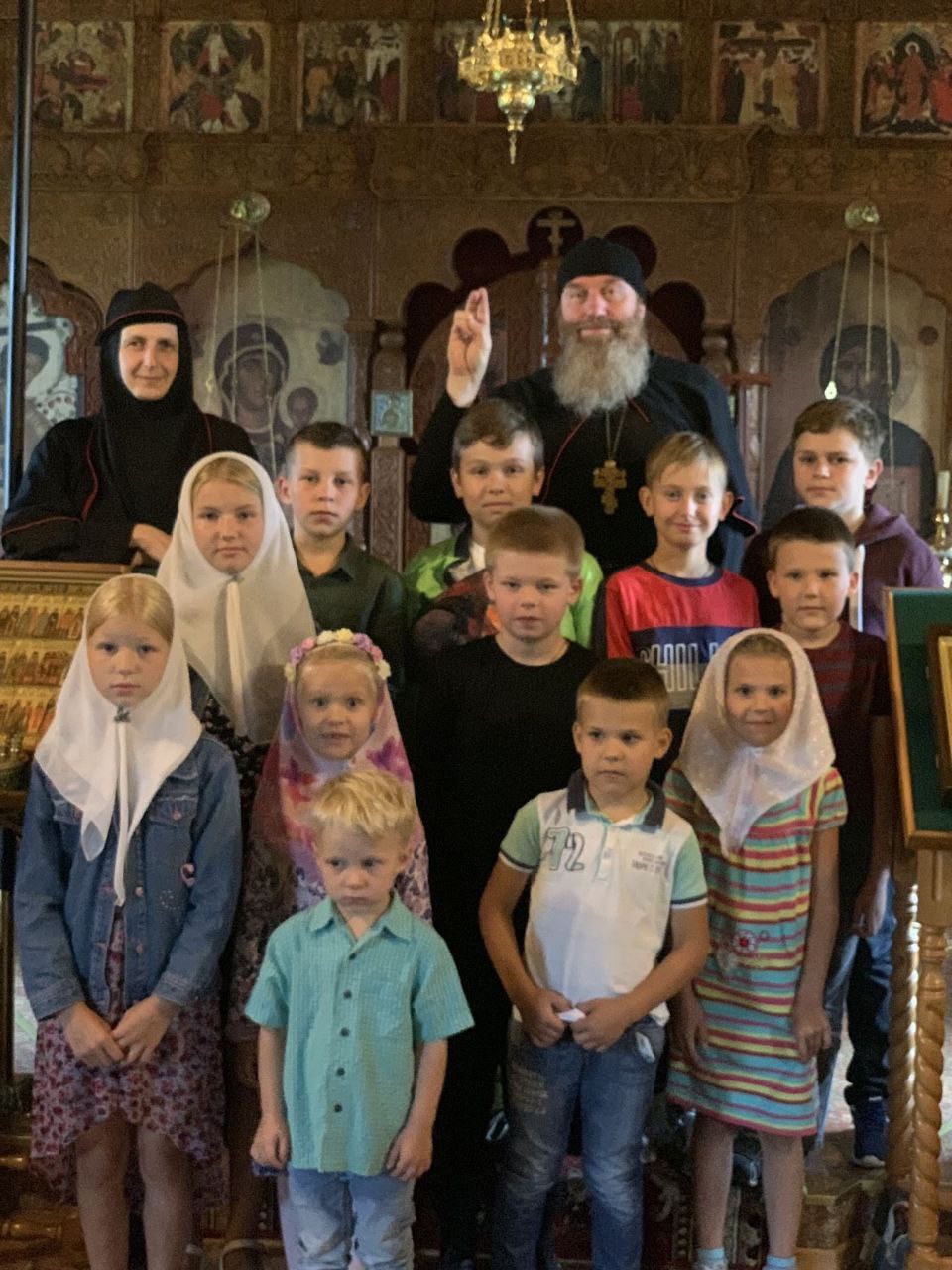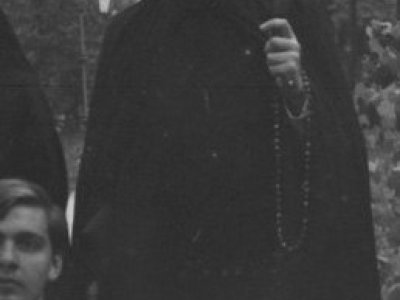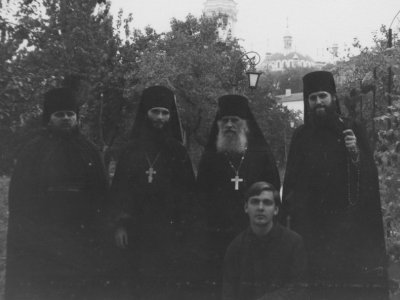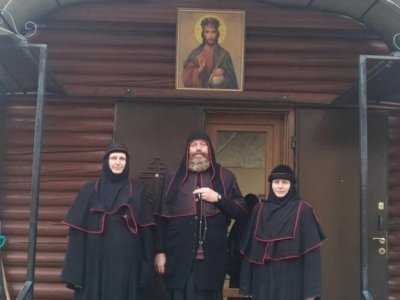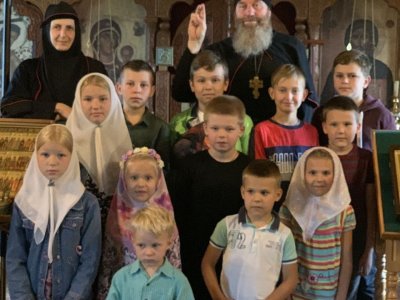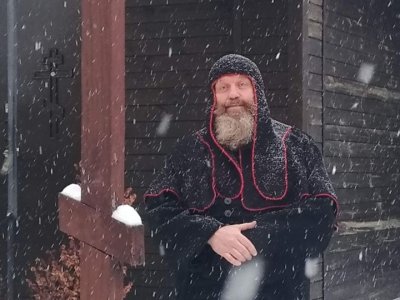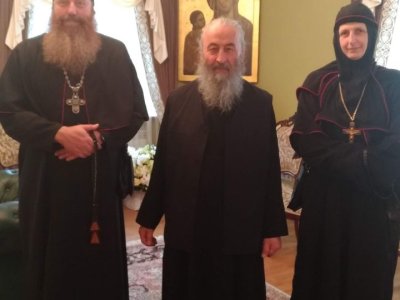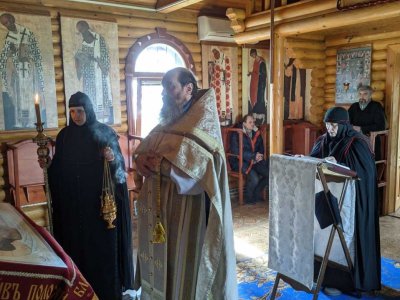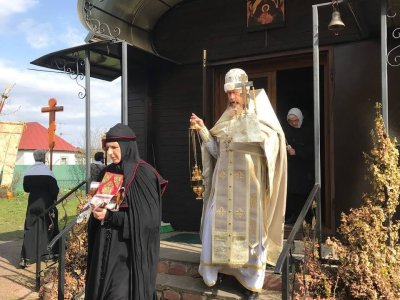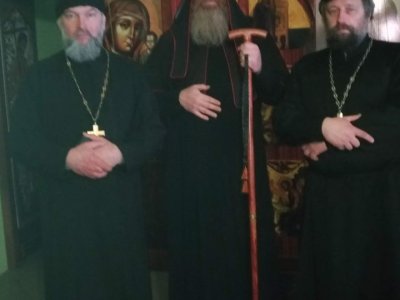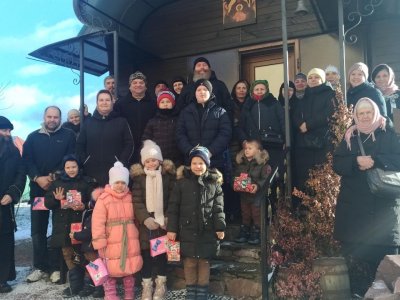Conversation with Father Akhila (Shakhtarin), Archimandrite of the convent
in honour of the Icon of the Mother of God "Kievo-Bratskaya" (village Gorenka,
Kiev region, Ukraine), April 2022.
- Father Achila, can you tell us about yourself, your coming to faith, your stay at the Kiev Pechersk Lavra?
- My coming to faith is linked to my early childhood, which took place in the old Kiev district of Podol. I was brought up by my grandmother, my mother's religious aunt, born in 1912. She had a natural religiosity, typical of people of the old generation. Subsequently, she was tonsured into monasticism with the name of Varlaama, in honour of the Venerable Varlaam, hegumen of the Pechersk Lavra. Our spiritual father at that time was schema-hegumen Varlaam (Yakovenko). He was a monk of Kiev-Pechersk Lavra, but when it was closed in 1961, he was in the Pochaev Lavra, where I met him and where he became our spiritual father. Our parish church was the Church of St. Elijah on Podol and the Florovsky Ascension Convent. It was the Florovsky Convent that mainly influenced my desire to dedicate my life to God and the Church and to accept monasticism. After the army, in 1990, when I was 19 years old, I became a novice in the Kiev-Pechersk Lavra, which was opened in 1988, the year of celebration of the Millennium of Baptism of Rus. In four years that I lived in Lavra I was tonsured, ordained hierodeacon, then hieromonk. I had various jobs: as a monk, head of the sewing workshop, obedientiary of the monastery. Later I performed the duties of the vicar, but did not abandon the post of senior chorister of the right choir of the Lavra, because from childhood I took part in choir service, and from the fifth form ran the choir myself: a non-professional, amateur one, but nevertheless. I also learned the musical notation there, which later helped me in studying Znamenny chant. In 1994, I was appointed to the Monastery of St. Nicholas in Shargorod, Vinnitsa diocese, where I stayed for two years. After this serving, at my own request, I moved to Novospassky monastery in Moscow to get seminary education. During my two years in the Novospassky monastery I completed a four-year course at the Moscow Theological Seminary and then returned back to Kiev.
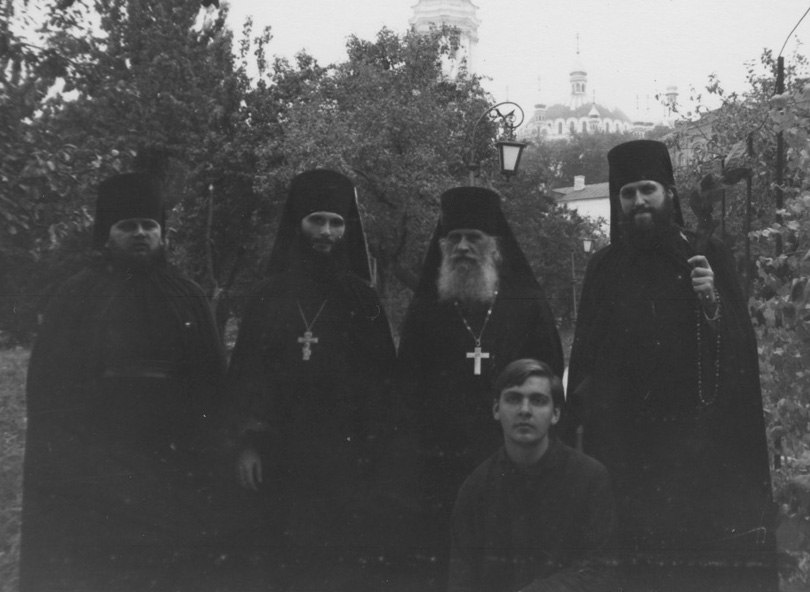
In Kiev, at first I was involved in the restoration of one of the oldest churches of Kievan Rus, the Church of St. Blaise on Podol, where excavations were made and where many interesting artefacts were found. It was a very interesting activity - both archaeological and geological. I was a rector of that parish for six years and then I was transferred to Kiev to the Church of Seraphim of Sarov in Puscha-Voditsa, where I served as a second priest for two years.
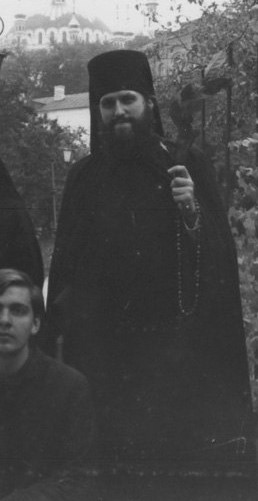
- Can you tell us about the history of the community where you serve? The idea to transfer the convent to the Old Believer tradition belongs to you personally, or was it a conciliar decision of the sisters and parishioners of the monastery?
- In my village an Orthodox parish in honour of the Kiev-Bratsk icon of the Mother of God was registered, and as a resident of that village I was appointed rector. Within a short time I took a bank loan and bought three pieces of land, on which our convent is now situated - the Convent in honour of the Kiev-Bratsk icon of the Mother of God. This year marks the 15th anniversary of the construction of our church, and the convent is 9 years old. The Synod of UOC reorganized the parish into a convent. A monastic community was created from among the parishioners and an abbess was appointed, who is still serving today. Thus began our study of monastic regulations and traditions. We wanted to create a convent that would be in accordance with the Eastern Orthodox patristic heritage.
The decision to move to the old rite was made by the whole community, but of course it was formed by me personally first. But since I have some authority in my community, both monastic and parish, people followed. Some didn't like it, so some people left. Mostly those who were used to akathists and some kind of molebens for the well-being of the household. We are interested in the school of spiritual life - our own, native, sacred and patristic school, based on the saints of Old Russia and the saints who nurtured the Eastern and Byzantine culture of spirituality. This is what motivated us to pursue this issue.
- Why did you become interested in the Old Believer liturgical tradition? Where do you think this interest came from, because in Ukraine mainly the traditions of "latinized" or New Greek Orthodoxy dominate, and then suddenly the old rite of Old Russia?
- Being by nature a liturgist, this suits me best of all ecclesiastical sciences, and this love of the rubrics and traditions of the Church I always pass on to those around me. If in the beginning of the convent's formation, our acquaintance with the Church rubrics was based on the generally accepted Tipikon, then later our love for the liturgical rubric led us to the Old Russian tradition, to the study of Old Believers' worship and everyday life, especially the monastic life. But there are many questions... The Old Believers, unfortunately, have preserved few monastic traditions. All that was preserved are late traditions formed in the XIX century as a result of severe persecutions and different conditions of survival. Therefore it is very difficult to know anything for sure. We are interested in Old Russia before the upheaval, before the change of customs, rites and liturgical texts. That is, in fact, the tradition of our Church before Metropolitan Peter Mohyla. Because, as you know, he was the main reformer here, of course.
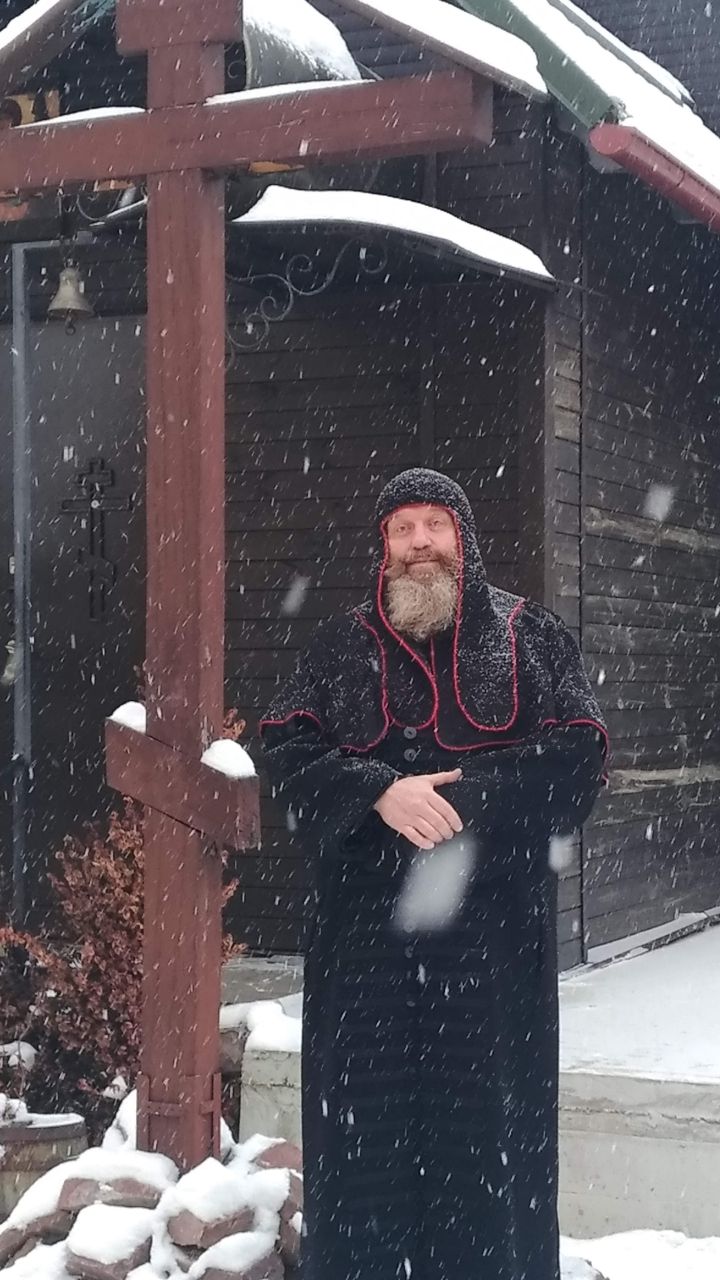
We are not standing still. We have restored worship in our monastery according to the old rite, including the form of dress and the Pomorian znamenny chant. Comparing elements of surviving Ukrainian manuscript chant books, we have come to the conclusion that the Pomorian tradition is very close to the chant of Kiev-Pechersk Lavra. But, unfortunately, modern chant or chant of XVIII-XIX centuries of Lavra is not that original chant.
I want to clarify at once that today we are not interested in Old Believerianism as such. It is, of course, an interesting subject, and it is always interesting and pleasant to communicate with Old Believers, but we are interested in Old Russia. What was in this place, in Kiev, before the religious upheavals and reforms, which started here much earlier than in the Moscow Tsardom. At the moment, we are very interested in the monastic Studite Charter, which was adopted by the Monk Feodosiy of Pechersk and was distributed first to all the monasteries of Kiev, and then it went on throughout Rus', but was displaced at the end of the 14th and beginning of the 15th centuries by the Jerusalem Charter. So now my work and the work of many of my friends and acquaintances consists in studying the Studite Charter. We have already managed to find something, including even liturgical texts, mostly preserved in the Kiev Psalter, the Vienna Octoechos, the Novgorod Book of Hours. We are trying to do something on the basis of all this. We are getting a lot of help from the Moscow priest Mikhail Zheltov, who in many ways is a model scholarly liturgist to me.
- What is the attitude of the UOC clergy to the Old Believer organization of the convent?
- In Ukraine there is not much interest in the old rite. The fact is that here antiquities have been destroyed for years, centuries. For many generations of clergymen and church people, the antiquity is the XVIII century. That baroque painting, baroque church music, if you may say so, and all the traditions that come out of it. That is why everything that is not ancient is considered to be so. We managed to find the Book of Hours of Kiev-Pechersk Lavra published before Peter Mohyla. It fully corresponds to almost all the texts, used by the Old Believers: "vó vieki viekom", "ót Boga", "ná more", etc. That is, everything is the same as it was before the reform of Patriarch Nikon. The clergy and hierarchs around us treat us and our interest differently. Metropolitan Onufry of Kiev takes a great interest in us when we visit him. We don`t flatter and are not afraid of anything in this respect, that`s why we visit him in traditional for us vestments. He is very welcoming, asks us about the features of the old rite, how it differs from the new one, and always takes a photo with us. We feel his support.
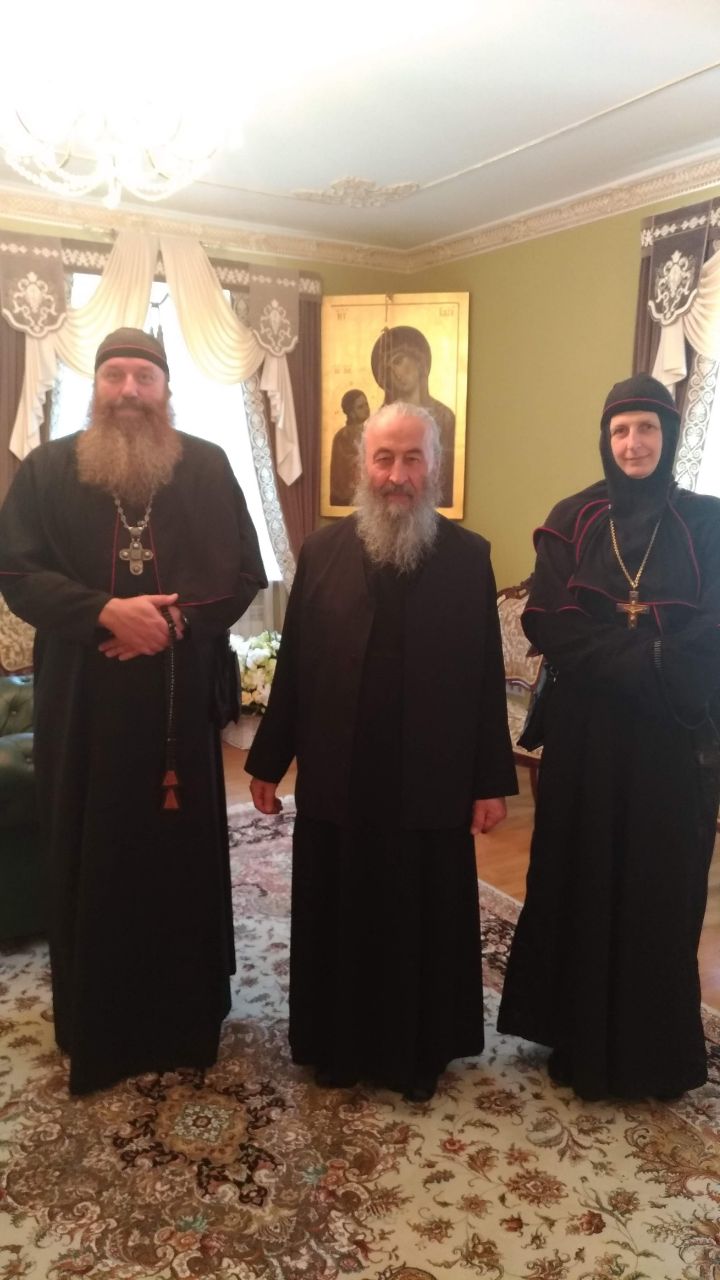
There is a fairly small number of young Kiev priests who are also interested, come to us on feasts, participate in services, also with their parishioners, buy literature, Old Believer psalter, liturgical books, etc. I have not encountered any negative attitude. Although I am local, so maybe no one straightforwardly expresses their dissatisfaction to me. In short, there is interest, but it is small compared to the interest in other countries and regions. As far as I know, in Ukraine there are about four or five places where the service is held in the old rite, and the way these services are conducted differs from each other. Well, and our convent today is the only Old Believer monastery. And not only in Ukraine. Although in Russia, as I have already heard, soon there will be monasteries on the basis of parishes where people pray the old way and use the Old Russian traditions in their everyday life.
